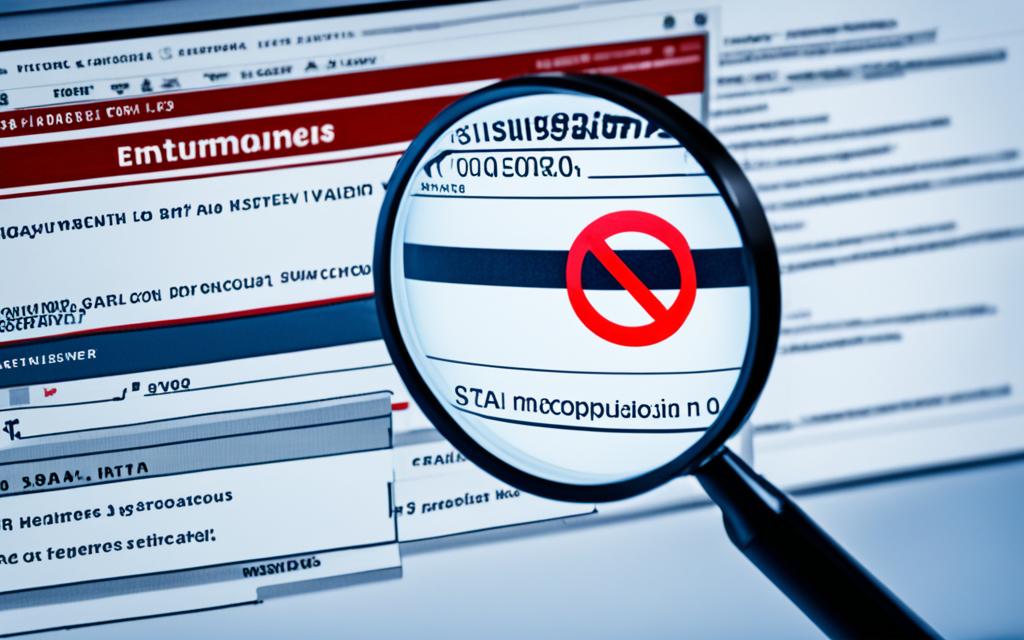The Importance of Data Scrubbing in Data Security
Data scrubbing plays a crucial role in ensuring the accuracy and integrity of data in today’s digital world. With the increasing volume and complexity of data, businesses and organizations face significant challenges in maintaining data quality. Inaccurate or inconsistent data can have serious implications for decision-making, compliance, and overall business performance.
Data scrubbing, also known as data cleansing, is the process of identifying and rectifying errors, redundancies, and inconsistencies in a database. By removing these aberrations, data scrubbing improves the quality and reliability of data, leading to better decision-making and more effective operations.
One of the primary reasons data scrubbing is of utmost importance is its impact on data security. In today’s era of frequent data breaches and cyber threats, safeguarding data has become an urgent priority for businesses. Clean and well-structured data reduces the risk of unauthorized access, data breaches, and regulatory non-compliance.
By effectively scrubbing data, businesses can eliminate sensitive or confidential information, ensuring compliance with data protection regulations such as the General Data Protection Regulation (GDPR). This not only protects the privacy of individuals but also safeguards the reputation and trust of the organization.
Furthermore, data scrubbing improves operational efficiency by removing redundancies and standardizing data formats. This streamlines data processing and analysis, enabling faster and more accurate insights. With clean and reliable data, businesses can make informed decisions, identify trends, and seize growth opportunities.
In conclusion, data scrubbing is a vital practice for businesses and organizations seeking to enhance data security and maintain high-quality data. By prioritizing data scrubbing and adhering to best practices, businesses can mitigate the risks associated with data errors and inconsistencies, improve operational efficiency, and make informed decisions based on reliable data.
Why Data Scrubbing Matters
Data scrubbing is an essential process for businesses and organizations looking to maintain high-quality data and ensure data security. There are several reasons why data scrubbing matters:
Improves Data Quality
Accurate, complete, and consistent data is crucial for making informed business decisions, conducting analysis, and generating reliable reports. Data scrubbing helps identify and correct errors, inconsistencies, and redundancies in a database. By cleaning and standardizing data formats and structures, businesses can improve the overall quality and reliability of their data.
Enhances Data Security
Data scrubbing plays a vital role in enhancing data security. It helps identify and remove sensitive or confidential information from databases, reducing the risk of data breaches and compliance violations. By scrubbing and removing unnecessary data, businesses can minimize the potential for unauthorized access and protect valuable information.
Increases Efficiency
By removing redundant data and standardizing formats, data scrubbing improves the efficiency and speed of data processing and analysis. Clean and organized data sets streamline operations and enable businesses to extract meaningful insights more quickly. It eliminates the time wasted on sifting through irrelevant or duplicate information, allowing employees to focus on essential tasks.
Ensures Regulatory Compliance
Data scrubbing is essential for ensuring regulatory compliance. Businesses need to adhere to specific data protection regulations, such as the General Data Protection Regulation (GDPR) in the United Kingdom. Scrubbing data helps businesses identify and rectify any non-compliant practices, ensuring that they meet the necessary legal requirements and avoid potential penalties or legal complications.
Overall, data scrubbing is vital for businesses seeking to maintain accurate, secure, and efficient data. It improves data quality, enhances data security, increases operational efficiency, and ensures compliance with regulatory standards.
How to Do Data Scrubbing Right
Data scrubbing is an ongoing process that requires a combination of technical and organizational measures. By following best practices, businesses can ensure efficient and effective data cleansing. The key steps to performing data scrubbing correctly are:
- Define Clear and Comprehensive Standards: Establishing data quality standards and rules is crucial. This includes defining what constitutes accurate, complete, and consistent data for your organization. By having well-defined guidelines, you can streamline the data scrubbing process and ensure consistent results.
- Use Automation Tools: Leverage automation tools to detect and correct errors and inconsistencies in your data. These tools significantly speed up the scrubbing process and minimize human errors. They can help identify duplicate entries, clean formatting issues, and enforce data integrity rules.
- Involve All Stakeholders: Data scrubbing requires cooperation from various departments and individuals. It is essential to involve all stakeholders, such as data entry personnel, managers, and analysts, to ensure effective collaboration and adherence to data quality standards.
- Prioritize High-Impact Data: Focus your efforts on critical data that has a direct impact on decision-making and business operations. Prioritizing important data sets will help you allocate resources effectively and achieve the desired outcomes of data scrubbing.
- Monitor and Measure Effectiveness: Continuously monitor and measure the effectiveness of your data scrubbing efforts. Regularly assess the quality and reliability of your data after scrubbing to identify areas for improvement and adjust your data cleansing strategies accordingly.
By following these best practices, organizations can optimize their data scrubbing processes and maintain accurate, reliable data for informed decision-making and improved performance.
The Role of Data Scrubbing in Customer Data Management
Data scrubbing plays a crucial role in customer data management. It helps prepare, process, and clean customer data for use in marketing campaigns, sales initiatives, and customer support. By ensuring the accuracy and consistency of customer data, data scrubbing provides several benefits that contribute to the overall success of businesses.
- Improved Customer Engagement: Clean and reliable customer data allows businesses to better understand their customers’ preferences, behaviors, and needs. This insight enables personalized marketing campaigns, tailored product recommendations, and targeted customer communication, ultimately leading to improved customer engagement and loyalty.
- Personalized Campaigns: With accurate customer data, businesses can segment their customer base effectively and create targeted marketing campaigns. This customized approach ensures that customers receive relevant and timely communications, resulting in higher response rates and conversion rates.
- Accurate Sales Conversations: Data scrubbing helps eliminate duplicate or outdated customer records, enabling sales teams to engage with customers based on accurate and up-to-date information. This accuracy enhances the effectiveness of sales conversations, builds customer trust, and improves sales outcomes.
- Better Customer Support: Clean customer data allows customer support teams to easily access and retrieve customer information, enabling efficient issue resolution and personalized assistance. This streamlined process enhances customer satisfaction and improves the overall customer support experience.
- Reduced IT Time Spent on Data Rehabilitation: By regularly scrubbing customer data, businesses can avoid the need for extensive data cleanup or rehabilitation projects in the future. This saves valuable IT resources, reduces costs, and allows IT teams to focus on more strategic initiatives.
Overall, data scrubbing in customer data management plays a vital role in enhancing customer relationships, enabling data-driven decision-making, and improving operational efficiency. It ensures businesses can make the most of their customer data by leveraging accurate, complete, and consistent information. Incorporating data scrubbing practices into customer data management strategies is essential for businesses striving to achieve success in today’s data-driven era.
Example Table: Benefits of Data Scrubbing in Customer Data Management
| Benefit | Description |
|---|---|
| Improved Customer Engagement | Enhances understanding of customer preferences, leading to personalized campaigns and improved engagement. |
| Personalized Campaigns | Enables targeted marketing efforts by segmenting customers based on accurate data. |
| Accurate Sales Conversations | Eliminates duplicate or outdated customer records, allowing for more effective sales interactions. |
| Better Customer Support | Enables efficient access to customer information, resulting in improved support experiences. |
| Reduced IT Time Spent on Data Rehabilitation | Avoids the need for extensive data cleanup projects, saving IT resources and reducing costs. |
Conclusion
Data scrubbing is an essential practice in maintaining the security and integrity of data. By ensuring accurate, complete, and consistent datasets, businesses can minimize the risks associated with data errors and inconsistencies. Adopting best practices and making data scrubbing an ongoing process allows organizations to improve data quality, enhance data security, and increase operational efficiency.
Integrating data scrubbing into customer data management offers significant benefits. It leads to improved customer engagement, enabling businesses to deliver personalized marketing campaigns and provide accurate sales conversations. Additionally, clean customer data enhances the efficacy of customer support efforts and reduces the need for data rehabilitation, resulting in valuable cost savings.
To harness the advantages of data scrubbing, businesses can explore various tools and software that automate the data cleaning process. By leveraging these technologies, organizations can streamline their data scrubbing efforts, optimize data quality, and enhance decision-making processes. Embracing data scrubbing as a fundamental aspect of data management empowers businesses to drive success in today’s data-driven landscape.
FAQ
What is data scrubbing?
Data scrubbing is a critical process for businesses and organizations to ensure the accuracy, completeness, and consistency of their data. It involves identifying and correcting errors, inconsistencies, and redundancies in a database.
Why does data scrubbing matter?
Data scrubbing matters because it improves data quality, enhances data security, increases efficiency, and ensures regulatory compliance. Accurate, complete, and consistent data is more reliable for decision-making, analysis, and reporting.
How do you do data scrubbing right?
Best practices for data scrubbing include defining clear and comprehensive standards and rules for data quality, using automation tools to detect and correct errors and inconsistencies in data, involving all stakeholders in the process, prioritizing high-impact data, and continuously monitoring and measuring the effectiveness of data scrubbing efforts.
What is the role of data scrubbing in customer data management?
Data scrubbing plays a crucial role in customer data management. It helps prepare, process, and clean customer data for use in marketing campaigns, sales initiatives, and customer support. Clean customer data leads to improved customer engagement, personalized campaigns, accurate sales conversations, better customer support, and reduced IT time spent on data rehabilitation.
How does data scrubbing enhance data security?
Data scrubbing is essential for bolstering data security and maintaining high-quality, reliable datasets. It ensures accurate, complete, and consistent data, minimizing the risks associated with data errors and inconsistencies. By following best practices and making data scrubbing an ongoing process, businesses and organizations can improve data quality, enhance data security, increase efficiency, and make informed business decisions.













